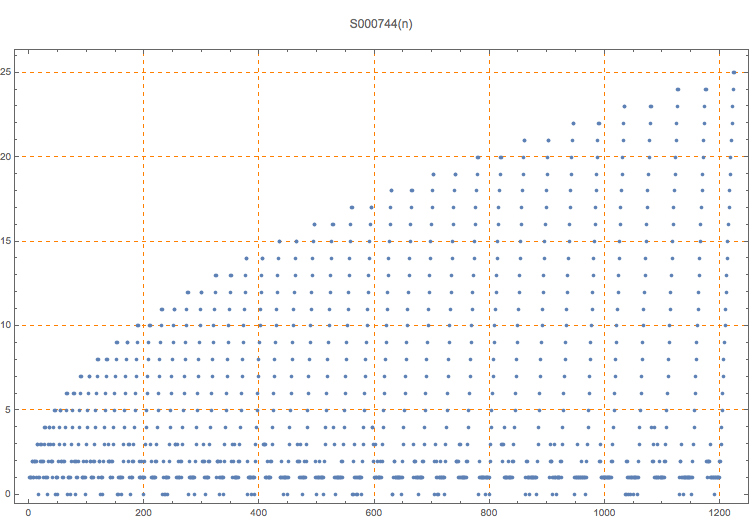Triangle of the number of palindromic (in bases 2 to n) pairs that sum to n.
1, 1, 1, 1, 2, 2, 1, 1, 2, 2, 2, 1, 2, 3, 3, 1, 0, 1, 2, 3, 3, 2, 2, 1, 2, 3, 4, 4, 1, 1, 0, 1, 2, 3, 4, 4, 3, 2, 2, 1, 2, 3, 4, 5, 5, 0, 1, 1, 0, 1, 2, 3, 4, 5, 5, 2, 2, 1, 2, 1, 2, 3, 4, 5, 6, 6, 0, 1, 1, 1, 0, 1, 2, 3, 4, 5, 6, 6, 2, 2, 0, 1, 2, 1, 2, 3, 4
2
The large number of zeros in this sequence indicates that there are many bases for which a number does not have a representation as the sum of two palindromic numbers.
T. D. Noe, Plot of 49 rows
T. D. Noe, Table of 49 rows
Yu Gao, Represent a natural number as the sum of palindromes in various bases, arXiv 1508.06185 (Aug 24 2015)
(Mma) nn = 20; pal = Table[{}, {nn}]; Do[pal[[b]] = Select[Range[0, nn], (d = IntegerDigits[#, b]; d == Reverse[d]) &], {b, 2, nn}]; Table[Table[Length[IntegerPartitions[n, {2}, pal[[b]]]], {b, 2, n}], {n, 2, nn}]
nonn,base,tabl
T. D. Noe, Nov 02 2015
